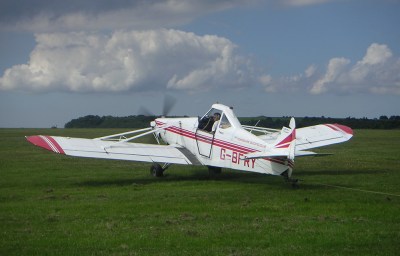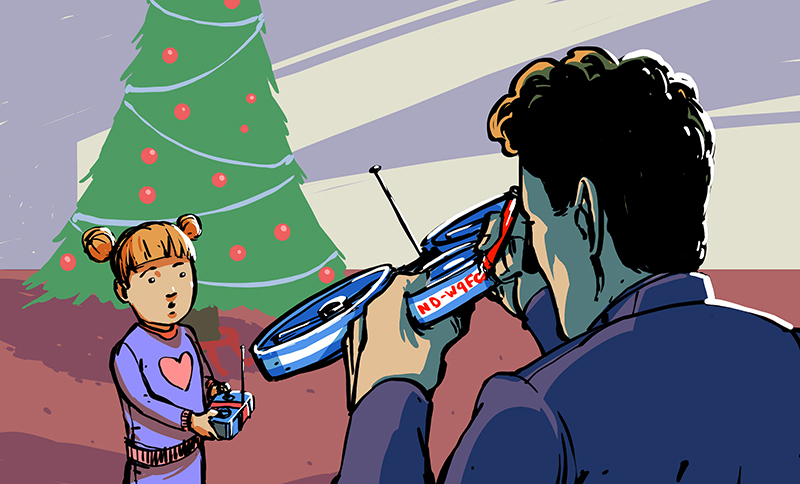Last week, the US Department of Transportation and FAA released their rules governing drones, model aircraft, unmanned aerial systems, and quadcopters – a rose by any other name will be regulated as such. Now that the online registration system is up and running.
The requirements for registering yourself under the FAA’s UAS registration system are simple: if you fly a model aircraft, drone, control line model, or unmanned aerial system weighing more than 250g (0.55 lb), you are compelled under threat of civil and criminal penalties to register.
This is, by far, one of the simplest rules ever promulgated by the FAA, and looking at the full text shows how complicated this rule could have been. Representatives from the Academy of Model Aircraft, the Air Line Pilots Association, the Consumer Electronics Association weighed in on what types of aircraft should be registered, how they should be registered, and even how registration should be displayed.
Considerable attention was given to the weight limit; bird strikes are an issue in aviation, and unlike drones, bird strikes have actually brought down airliners. The FAA’s own wildlife strike report says, “species with body masses < 1 kilogram (2.2 lbs) are excluded from database,”. The Academy of Model Aircraft pushed to have the minimum weight requiring registration at two pounds, citing their Park Flyer program to define what a ‘toy’ is.
Rules considering the payload carrying ability of an unmanned aerial system were considered, the inherent difference between fixed wing and rotors or quadcopters was considered, and even the ability to drop toy bombs was used in the decision-making process that would eventually put all remotely piloted craft weighing over 250g under the FAA’s jurisdiction. We must at least give the FAA credit for doing what they said they would do: regulate drones in a way that anyone standing in line at a toy store could understand. While the FAA may have crafted one of the simplest rules in the history of the administration, this rule might not actually be legal.
The FAA gave us the easiest solution, but perhaps not a legal solution

To consider how bad the FAA rules for unmanned aerial systems could have been, we need only to look at current FAA rules. To the right is a Piper Pawnee PA-25 – a plane commonly used for ‘crop dusting’ and glider tows – with different rules for the operation of this aircraft depending on what it is doing.
When used as an agricultural aircraft, the pilot must obey a certain set of rules, in this case Part 137. These rules are extremely lax; the pilot does not need to observe normal airport traffic patterns, and when this plane is used for dusting crops, the pilot is basically free to do anything – fly within 500 feet of buildings, people, power lines, and property – so long as it doesn’t create a hazard.
These rules change if the aircraft is not being used to spray crops, and agricultural aircraft are commonly used to tow gliders up to altitude. There’s another rule for that buried in Part 91, and glider tow pilots are required to hold the proper endorsements. Since the PA-25 is a single-seat airplane, the pilot for this glider tow will be required to fly a glider towed up by another plane three times a year. Yes, in order to fly their airplane, glider tow pilots are required to fly another airplane to stay current.
This is just one example of how confusing FAA regulations can be, and there are thousands more like it. In creating the rules governing drones or unmanned aerial systems, the FAA displayed a tiny bit of wisdom and made a rule that anyone could understand. If it’s unmanned, controlled remotely, is flown outdoors, and weighs more than 250g, the pilot must be registered. There’s a problem with this rule, though: it may not be legal.
A few years ago, Congress passed the Modernization and Reform Act of 2012, an immense 300-page tome that set directives to the FAA including how airports should be improved, what medical certificates apply to what type of pilot, and special rules for model aircraft.
The Administrator of the Federal Aviation Administration may not promulgate any rule or regulation regarding a model aircraft, or an aircraft being developed as a model aircraft
In the Modernization and Reform Act of 2012, ‘model aircraft’ are defined as, ‘an unmanned aircraft capable of sustained flight in the atmosphere, flown within visual line of sight, and flown for hobby or recreational purposes.’ If these qualifications are met, the FAA may not make a rule regarding these aircraft, so long as they are not flown within 5 miles of an airport.
Yet the requirements for the FAA’s UAS registration do just that. A month ago, 99% of the aircraft sold on HobbyKing were safe from FAA rules. By making a simple rule that anyone can understand, the FAA may have crossed a line, and overstepped the authority granted to it by Congress.
The Future of UAS Regulation
Understandably, there are more than a few people upset over the new regulation. [Bruce], a.k.a. [xjet] on YouTube has weighed in on the issue comparing the registration of model aircraft to the registration of sex offenders. While this is inflammatory, the sentiment is that the FAA is requiring the registration of aircraft that could never be a danger to national airspace remains.
There is perhaps a legal justification for requiring a registration number all model aircraft weighing more than 250g. In the Modernization and Reform Act of 2012, the FAA is still allowed to, “pursue enforcement action against persons operating model aircraft who endanger the safety of the national airspace system.” This means mid-air collisions, and the FAA itself has been propagandizing UAS and model aircraft sightings by pilots as ‘near misses’ with aircraft.
When (not if) the FAA registration system for UASs eventually goes to court, the legal justification will hinge on the safety of the national airspace system. Bird strikes, and ostensibly mid-air collisions with unmanned aircraft, can bring down airliners. Bird strikes are relatively common, though, and the weight limit for UAS isn’t based on empirical evidence. The FAA itself doesn’t think the risk of birds weighing less than 1kg (2.2lb) is very high, raising the question: is the limit of 250g on unmanned aircraft is too low?
For now, though, we’re stuck with the current system for registering unmanned drones, model aircraft, and quadcopters. It is not the best system possible, but for the general public it is very understandable. Even if the rule might be illegal and not based on empirical evidence, this is what the FAA was going for: a rule anyone could understand.
















And…. now you know how Gun owners feel….
Dan was joking.
Because I am a gun owner.
Because Dan’s a friend of mine. He was joking.
I said to my friend, you have to register your drone or it could result in penalties. He said how are they going to enforce it? I said, maybe the FAA will deploy little F-16 drones to shoot down your quadro copter drone.
Having so many drones in the sky is madness. They will eventually bring down commercial airliners, red necks WILL shoot at them and cause collateral damage, they will run into and kill people, they will be used for terrorist activities. What are you people thinking??? M201 pilot…